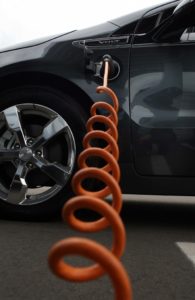With Europe’s fixed date of 2021 for the introduction of a 95g/km CO2 fleet average standard, some onlookers in the automotive industry are questioning whether the target will be met. During the big picture panel discussion for passenger cars at Automotive Megatrends Europe 2014, some of Europe’s leading figures considered the prospects for meeting this standard and how it will be achieved.
Benoit Schlumberger, Director Global Market and Industry Analysis at GM Europe, felt that the onus was on policy makers as well as OEMs to help incentivise lower emission vehicles. “If customers do not buy the technologies, you will not meet the targets,” he said. “You have to incentivise customers to buy, or penalise them if they do not buy them. We can offer the technologies already. If the penetration was much higher, we would have a much lower level of CO2. We need to ask policy makers what needs to be done to incentivise this. But we cannot sell at a loss. If customers don’t want to buy, it’s going to be a challenge.”

Erik Jonnaert, Secretary General at ACEA, suggested that the automotive industry has already made significant strides in the field of emission reduction. He believed that the automotive industry has been singled out unfairly as the main contributor for carbon emissions, and called for other industries to be regulated at the same level.
“If you look back, we have been very successful,” Jonnaert commented. “We have already delivered more than 30% CO2 reductions. If we reach the next set of targets and compare that to where we were in 1995, we will have reduced our emissions by 50%. Yet we continue to be singled out for our emissions. I don’t think that this is acceptable.
“When you talk transport sector, we are not the only ones contributing. We need to look at it across the whole sector. From now until 2021, if we are to meet the ultimate ambitious target, it will require a 5% annual reduction rate. Why are we having to reduce more than other sectors? This has to be addressed.
“Reaching the targets by 2021 will be very ambitious. So far we have been able to deliver, but the further we go down, the more challenging it becomes for the technology. Affordability is an issue too – how do we incentivise customers to buy these alternative powertrains? We’re going to need to reflect on market realities about how to proceed with these alternative powertrains.”
On the subject of which powertrain options have the most potential for reducing overall emissions and securing a significant share of the market, Ulrich Eichhorn, Managing Director – Technology and Environment, at VDA, was keen to highlight the realities of moving towards passenger car electrification. “EVs are a big focus,” he said. “But they are largely for people who live in cities and don’t have to drive very far. That’s where they are standing today. As the range grows and the costs drop, these cars will reach more people.
“Plug-in hybrids currently have the most promise. Customers don’t get the range anxiety, because the combustion engine kicks in. Range extenders are also making inroads for this reason. But both these technologies are still too expensive for many customers.”
 Eichhorn continued to explain that the three biggest obstacles for electric cars are price, range and charging infrastructure, and agreed with Schlumberger that policy makers have a responsibility to further incentivise customers in the area of infrastructure. “We see municipalities have a role to provide infrastructures in particular,” he said. “It’s a hell of a lot cheaper for them to do that, compared to what we have to put in the cars. It needs to be sorted out, because it’s what puts customers off.”
Eichhorn continued to explain that the three biggest obstacles for electric cars are price, range and charging infrastructure, and agreed with Schlumberger that policy makers have a responsibility to further incentivise customers in the area of infrastructure. “We see municipalities have a role to provide infrastructures in particular,” he said. “It’s a hell of a lot cheaper for them to do that, compared to what we have to put in the cars. It needs to be sorted out, because it’s what puts customers off.”
The conversation quickly moved towards what many see as the main opponent of battery EVs: hydrogen fuel cells. Eichhorn praised the technology, but again considered cost to be a significant barrier in its market penetration. “The tanks are not as expensive as EV batteries, but the real question is what does the hydrogen and the rest of the system cost? Most of the technological problems have been solved, but being able to market the car at a competitive price is still an issue.”
Schlumberger also stated that the lack of infrastructure for hydrogen refuelling would pose a challenge to its growth. “You cannot have the hydrogen infrastructure in your home,” he stated. “The technology will improve and the cost will come down, but there will be a big problem in terms of infrastructure.”
Overall, the shared mood among the panel was that, despite many challenges ahead, the automotive industry should reflect on what it has already achieved in the field of powertrain and look to the future with optimism. “Nobody would have thought in 1990 what we are driving today is possible,” Eichorn said. “We can be proud of what we’ve achieved but there is much more to come.”
Matt Ayres
